
Fig 1. A Chord.
By Crispin Sexi, AS 41
Update: here's my slide deck on eight part music from 1st Bardic War
This article discusses some difficulties with composing eight-part 16thC counterpoint, and a method to overcome them. This article assumes familiarity with the theoretical side of Renaissance music and does not touch on various aspects of compositional technique.
Renaissance composers usually wrote their choral music for three or four parts, or voices. The usual parts are those of soprano, alto, tenor and bass. For especially grand pieces of music they would sometimes add extra voices, though each part added would increase the technical difficulty of writing the piece. The parts within larger choral pieces would sometimes be grouped into two or more smaller choirs that would take turns singing individually and combine together towards the end of the piece, a style known as polychoral music.
Writing for eight parts was tricky, but not uncommon - we have pieces by Palestrina, Gibbons and Ravenscroft, to name a few. But what was so hard about it, and how can the aspiring composer hope to overcome the challenges?
The musical chord as used in the Renaissance, at its essence, is a combination of only three pitches. The first of these is the root, the note that the other two stand upon. The next note of the chord is a major or minor 3rd above the root, sounding an imperfect harmony. The final pitch is the perfect 5th above the root.

Fig 1. A Chord.
The chord is still fundamentally the same when the three pitches are separated by octaves, or notes are doubled by additional voices.
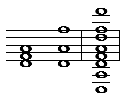
Fig 2. Three arrangements of the same chord.
A chord is in root position if the root note is the lowest pitch. First inversion is where the 3rd is the lowest pitch and second inversion is where the 5th is the lowest in pitch.

Fig 3. Examples of root position and first and second inversions.
Harmony in part-songs is constructed by sequences of chords, where each voice sounds one note of the chord, so:

becomes:
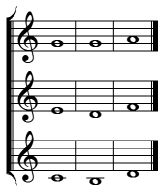
Fig 4. Three chords arranged for three parts.
The trick in Renaissance music is that each voice must be a singable melody and also must move with apparent independence from every other voice.
To be singable, a voice must stay within a certain range; say an octave from lowest to highest note. Any two consecutive notes must form a unison, a major or minor 2nd or 3rd, or a perfect 4th, 5th or 8ve. The minor ascending 6th is also allowed, but it is relatively rare (Jeppesen, p85). There are quite a lot of other rules for a good melody line, but the above will serve our current purposes.
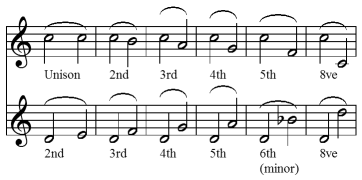
Fig 5. The intervals allowed in Renaissance melodies.
Even though all parts have to fit within the given chords, the illusion of independence is gained by preventing any two parts moving in parallel whilst making a unison, 5th or 8ve (Morley p72). Instead, when the bass leaps down by a 4th, the soprano might leap up by a 3rd, the alto could move downwards a 2nd, while the tenor note could be simply repeated.
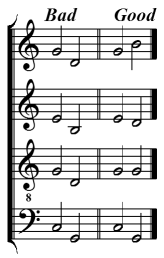
Fig 6. Parallel and independent motion.
Since there are only three pitches in each chord, it is evident that when moving between two successive chords, a voice starts on one of three pitches of the first chord and ends on one of three pitches of the second chord. One might start on the root and end up on the 5th.

Fig 7. Movement from root to root, 3rd or 5th.
The nine options for this combination of starting and ending note cannot necessarily all be used at the same time. One part moving root-root, prevents a second part moving 5th-5th, unless that second part moves in the opposite direction to the first one, a technique known as contrary motion. Moving from the 5th to the 5th (or even 8ve to 8ve) in contrary motion is still only available for the intervals in Fig 5.
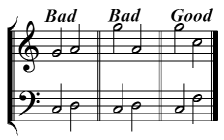
Fig 8. Parallel and contrary 5ths.
The problem of ensuring independent motion becomes harder the more parts one writes for. Let us examine the problem.
One voice is special, and it is the bass part, for it dictates the harmonic structure of the piece. The bass voice sounds the lowest note of any chord, usually the root, sometimes the 3rd, and very rarely the 5th.

Fig 9. A bass part.
The reason for the 5th being rare in the bass part is that the interval of the perfect 4th is considered harsh in the 16th Century, especially so when the lower note is the bass. By having the 5th of a chord in the base, any other part sounding the root of the chord is then making a 4th with the bass. The other parts can quite happily make 4ths with each other, just not with the bass part, unless they intend to introduce and resolve it as they would any other dissonance.
The first part to be added to the bass is usually the soprano. When adding only one voice, obeying the rule of apparent independence is simple enough - just use the 8ve, 3rd or 5th of each chord, and make sure not to move by the same interval in the same direction as the bass part when making an 8ve or 5th.
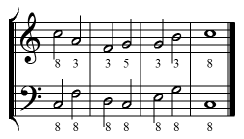
Fig 10. Bass plus soprano, showing the chord position for each note
In Fig 10 and later examples we will follow the lead of Bathe, Campion and other English Renaissance theorists and write "8" to indicate the root or any number of octaves above it, "3" to mean the 3rd or its octaves, and "5" to mean the 5th or its octaves.
As you add extra voices between the soprano and bass, it becomes apparent that it is harder to ensure each voice moves independently. Say the bass moves up by a 5th from C to G, and the soprano moves down a 2nd from E to D. You might make the tenor part move up a 3rd from G to B. But what can the alto part do? The three notes of each chord are already covered by the three other parts, so for the alto to be independent it must double-up with chord members already sounded, but avoid moving in parallel 5ths or 8ves with any of the other parts. Options available include moving down a 2nd from C to B, up a 3rd from E to G, or staying still on G.
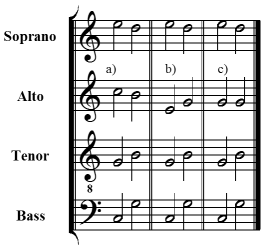
Fig 11. Moving from C major to G major, showing three options for the alto part.
Searching out movement options for all the parts is a large part of the labour of composition. Ensuring apparent independence is what makes eight-part writing so hard. What is needed is a system to help us.
Thomas Campion devised a method for easily adding three parts to an existing bass line. In essence, the upper parts rotate through inversions of the chord. The part sounding the 8ve moves to the 3rd, the part sounding the 3rd moves to the 5th and the 5th moves to the 8ve.
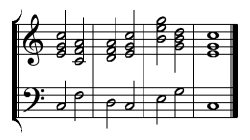
becomes
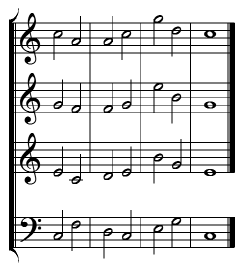
Fig 12. Soprano, alto and tenor parts rotating through chord inversions.
Whilst this method does not ensure a pleasing melody line, it does prevent parallel 5ths and 8ves. Campion provides a table of six figures to help with calculation of the three parts. In order to better provide for a smooth melody, he gives us a method that switches between moving forwards and backwards through the chord inversions, i.e. upwards and downwards in his table.
| 8 | 3 | 5 |
| 3 | 5 | 8 |
Table 1. Campion's table.
For a full discussion of Campion's method, with worked examples, see Jeff Lee's article.
If we use the forward and the reverse of Campion's method at the same time, we can add a total of six parts above a bass line, all apparently independent of each other.
| Part | From | To |
|---|---|---|
| Bass | 8 | 8 |
| Forward Campion | 8 | 3 |
| 3 | 5 | |
| 5 | 8 | |
| Reverse Campion | 8 | 5 |
| 5 | 3 | |
| 3 | 8 |
Table 2. Bass, plus forward and reverse Campion.
What we achieve is three parts on the root, and two on the 3rd and two on the 5th at every step of the piece. While such an arrangement of notes is typical for a chord in seven-part music, we should also note that always having the same set of chord notes for every step of the melody is unusual.
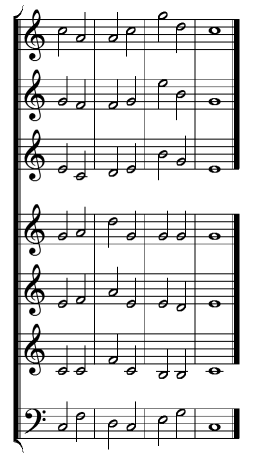
Fig 13. Seven-parts made using forward and reverse Campion.
We also should note at this point that the six upper parts we write using this method will quite likely be un-singable, either because of including a series of awkward leaps, or because they will not stay within the bounds of their range. We can fix this problem by allowing any two parts that are sounding the same chord note to switch which note they are next supposed to sound, and also by adding passing-notes or rests. In Fig 13, for example, the second line of music could have its leap of a major 6th (G to E) fixed by substituting a rest for the E, and line 4 could be given slightly more variety by swapping it with line three when they are both on the note G in bar three.
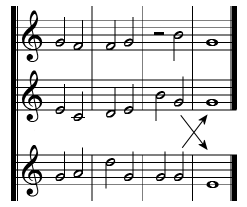
Fig 14. Possible amendments to parts 2, 3 & 4 from Fig 13.
An alternate solution for any parts that jump more than a 5th is to invert the interval, such as turning an ascending 6th into a descending 3rd, or a descending 7th into an ascending 2nd.
By fixing the generated parts using the above techniques, we can use Table 2 as an aid to generating acceptable melodies, as well as ensuring apparent independence between all of the parts.
So now that we have seven-part music, how can we add an eighth part, while still following all the rules? Let's explore the options.
One type of movement allowed that we have not really explored yet is that of parallel 3rds and 6ths. Although parallel 5ths and 8ves are banned, parallel 3rds and 6ths are always allowed. Since we're expecting the bass part to be sounding the root of each chord, we can't set up a part with 6ths running parallel to the bass, but the 3rd of the chord is available. Using the 3rd, we may expand Table 2 into Table 3.
| Part | From | To |
|---|---|---|
| Bass | 8 | 8 |
| Forward Campion | 8 | 3 |
| 3 | 5 | |
| 5 | 8 | |
| Reverse Campion | 8 | 5 |
| 5 | 3 | |
| 3 | 8 | |
| 8th Part | 3 | 3 |
Table 3. The eighth-part using parallel 3rds.
Whilst Table 3 adequately satisfies our basic needs, a brief survey of real eight-part music reveals that having three parts sounding the 3rd is a relatively rare occurrence. More often the extra note chosen is the 8ve, or the 5th, so we should look for a method that will allow more of them.
Another possibility is the use of contrary motion. One part could sound the same two notes as another, so long as the second part moves in the opposite direction to the first. But we must limit such situations to cases where both parts move by intervals allowed for good melodies. For instance, when one part moves down by a 2nd, the other part would be forced to leap up by a 7th, which is not allowed. Essentially, we limit ourselves to cases where one part leaps down by a 4th or 5th and the other leaps up by a 5th or 4th.
The final option easily available to us is where a note is shared between two successive chords. Since remaining on the same note is not strictly movement at all, we can have more than one voice stay on the same note whenever the progression of chords make this option available to us.
These options for the eighth part are summarised in Table 4. Numbers in round brackets indicate stationary notes; those in square brackets indicate contrary movement; and plain numbers need no special treatment. The composer would need to pick a starting interval between the bass part and the eighth part, most often the 8ve. Given one interval, and the movement up or down of the bass part (the course), the next chord member can be selected from Table 4. The new interval is then used to select the next one, and so on through to the end of the piece. It is important to keep track of the special treatments required for most of the notes in the eighth-part.
| Current Interval | |||
|---|---|---|---|
| Course | 8 | 5 | 3 |
| 4up or 5down | (5) [8] | [5] | 3 [3] |
| 3up or 6down | [3] | (3) | (8) [5] 3 |
| 2up or 7down | [3] | [8] | [5] 3 |
| Unison or 8ve | (8) [5] | (5) [8] | (3) |
| 2down or 7up | [5] | [3] | [8] 3 |
| 3down or 6up | (3) | [3] | (5) [8] 3 |
| 4down or 5up | [8] | (8) [5] | 3 [3] |
Table 4. The complete eighth part
It can be seen that course intervals greater than a 4th are treated the same as their inversion for finding the next allowed note.
In some cases, there is choice as to which chord note one may take. The choice might be influenced by noting that it is common in eight-part writing to have the eighth part sound the root of the chord, but also that variety is pleasing.
One problem with the system so far assembled is, that there are certain leaps that are difficult to sing, and automatic movement between chords might well cause us to write those leaps. Fortunately, by choosing the closest note we needn't leap further than a 5th, so the only intervals we should be concerned about are diminished and augmented ones, in particular the tritone.
In the natural notes, the tritone occurs between F and B, so our system would, for instance, cause one part to leap by a tritone when the chord moves from D minor to G major. An annotation in Campion's work provides us with a clue as to how to avoid this problem, when it states that one should always make the 3rd of the chord major in both chords when the bass leaps by a 5th. If we examine all the possible courses for the bass part, we see that only the following chord transitions avoid augmented and diminished intervals:
| Course Up | Chords | Course Dn |
|---|---|---|
| Major 7th | None | Minor 2nd |
| Minor 7th | min to Maj | Major 2nd |
| Major 6th | Maj to min | Minor 3rd |
| Minor 6th | min to Maj | Major 3rd |
| Perfect 5th | min to min Maj to Maj |
Perfect 4th |
| Perfect 4th | min to min Maj to Maj |
Perfect 5th |
| Major 3rd | Maj to min | Minor 6th |
| Minor 3rd | min to Maj | Major 6th |
| Major 2nd | Maj to min | Minor 7th |
| Minor 2nd | None | Major 7th |
Table 5. Safe chord progressions.
While this appears to be a complicated set of restrictions, the following can be determined from it:
An entire piece of music might be written with these safe chord progressions, and examination of existing eight-part music shows that composers favoured them, especially movement by 4ths and 5ths on major chords. But what happens when, for the sake of interesting music, we are forced to put incompatible chords next to each other? We still have some options: we may give the part with the offending leap a rest, or we may substitute an unused candidate from Table 4.
Time for a worked example; here are the chords and notes from the bass-line of "Change Then for Lo!" by Anthony Holbourne.

Fig 15. Bass part from "Change then for Lo!"
Not surprisingly, the bass part always sounds the root of each chord:
| Course | 4up | 4dn | 4dn | 2up | 3dn | 2up | 4up | |
|---|---|---|---|---|---|---|---|---|
| Bass | 8 | 8 | 8 | 8 | 8 | 8 | 8 | 8 |
Table 5. The course and the chord position of the bass part.
Comparing the chords and course to Table 5 reveals that the only non-safe transition is between chords six and seven (Bb to C, a major 2nd up). Looking closely at those two chords we find that moving 8 to 3 would leap by a tritone and any part so doing will need to be fixed.
Let us expand the table to seven parts with forward and reverse Campion.
| Part | Chord notes | |||||||
|---|---|---|---|---|---|---|---|---|
| Bass | 8 | 8 | 8 | 8 | 8 | 8 | 8 | 8 |
| Forward | 8 | 3 | 5 | 8 | 3 | 5 | 8 | 3 |
| 5 | 8 | 3 | 5 | 8 | 3 | 5 | 8 | |
| 3 | 5 | 8 | 3 | 5 | 8 | 3 | 5 | |
| Reverse | 8 | 5 | 3 | 8 | 5 | 3 | 8 | 5 |
| 5 | 3 | 8 | 5 | 3 | 8 | 5 | 3 | |
| 3 | 8 | 5 | 3 | 8 | 5 | 3 | 8 | |
Table 6. Forward and reverse Campion.
The tritone occurs in part four (the third part in Forwards Campion). We can deal with it easily, by turning either the root or the 3rd into a rest. In this instance we'll choose the 3rd.
Now we will add an eighth part. Let's start it on the 8ve, and use the course of the bass part to determine each new note as per Table 3.
| Course | 4up | 4dn | 4dn | 2up | 3dn | 2up | 4up | |
| 8th | 8 | (5) | (8) | [8] | [3] | (5) | [8] | [8] |
Table 7. An eighth part.
Now we have the chord members for all eight parts.
| Part | Chord notes | |||||||
|---|---|---|---|---|---|---|---|---|
| 1 | 8 | 8 | 8 | 8 | 8 | 8 | 8 | 8 |
| 2 | 8 | 3 | 5 | 8 | 3 | 5 | 8 | 3 |
| 3 | 5 | 8 | 3 | 5 | 8 | 3 | 5 | 8 |
| 4 | 3 | 5 | 8 | 3 | 5 | 8 | 3 | 5 |
| 5 | 8 | 5 | 3 | 8 | 5 | 3 | 8 | 5 |
| 6 | 5 | 3 | 8 | 5 | 3 | 8 | 5 | 3 |
| 7 | 3 | 8 | 5 | 3 | 8 | 5 | 3 | 8 |
| 8 | 8 | (5) | (8) | [8] | [3] | (5) | [8] | [8] |
Table 8. All eight parts, with duplication shaded.
Since we've not actually made any use of parallel 3rds, it can be seen in this table that the eighth part is always duplicating one of the other parts for any two successive notes, either by remaining on the same note, or by contrary motion.
Now we can make use of the above framework to turn "Change Then For Lo!" from a three-part setting into an eight-part setting. First, let us strike out the first row from the table and mark each note in the bass as coming from row 1:
| Part | Chord notes | |||||||
|---|---|---|---|---|---|---|---|---|
| 1 | ||||||||
| 2 | 8 | 3 | 5 | 8 | 3 | 5 | 8 | 3 |
| 3 | 5 | 8 | 3 | 5 | 8 | 3 | 5 | 8 |
| 4 | 3 | 5 | 8 | 3 | 5 | 8 | 3 | 5 |
| 5 | 8 | 5 | 3 | 8 | 5 | 3 | 8 | 5 |
| 6 | 5 | 3 | 8 | 5 | 3 | 8 | 5 | 3 |
| 7 | 3 | 8 | 5 | 3 | 8 | 5 | 3 | 8 |
| 8 | 8 | (5) | (8) | [8] | [3] | (5) | [8] | [8] |
Table 9. Bass part struck out.

Fig 16a. Source row for bass notes marked.
Now let's add the original melody and, based on the interval it makes with the bass part, see which row each note comes from. The first note is C, making a 5th above F, so it might come from row 3 or 6. The second note is D, making a 3rd above B-flat. Since this 3rd is following a 5th made by the previous note, it must come from row 6, where a 3rd follows a 5th. The third note in the melody is a C, making a 5th above the bass part's F. This makes it a 5th following a 3rd, so it comes from row 2. The rest of the melody notes are assigned rows in this same fashion.
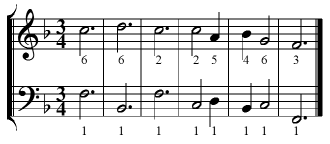
Fig 16b. Bass plus soprano.
Now we can strike out those notes from the table.
| Part | Chord notes | |||||||
|---|---|---|---|---|---|---|---|---|
| 1 | ||||||||
| 2 | 8 | 3 | 3 | 5 | 8 | 3 | ||
| 3 | 5 | 8 | 3 | 5 | 8 | 3 | 5 | |
| 4 | 3 | 5 | 8 | 3 | 5 | 3 | 5 | |
| 5 | 8 | 5 | 3 | 8 | 3 | 8 | 5 | |
| 6 | 8 | 5 | 3 | 8 | 3 | |||
| 7 | 3 | 8 | 5 | 3 | 8 | 5 | 3 | 8 |
| 8 | 8 | (5) | (8) | [8] | [3] | (5) | [8] | [8] |
Table 10. Soprano part crossed out.
It can be seen that the soprano freely moves between rows in our framework. So too does the original alto line:

Fig 16c. The alto part.
| Part | Chord notes | |||||||
|---|---|---|---|---|---|---|---|---|
| 1 | ||||||||
| 2 | 8 | 3 | 3 | 8 | 3 | |||
| 3 | 5 | 8 | 8 | 3 | 5 | |||
| 4 | 3 | 5 | 8 | 3 | 5 | 3 | 5 | |
| 5 | 8 | 5 | 3 | 8 | 3 | 8 | 5 | |
| 6 | 8 | 5 | 8 | 3 | ||||
| 7 | 5 | 3 | 8 | 5 | ||||
| 8 | 8 | (5) | (8) | [8] | [3] | (5) | [8] | [8] |
Table 11. The alto part crossed out.
So we have the original three voices, marked with their rows in our table. The five new parts must make use of the notes still available in our table, and can jump freely between rows.
Let us make a tenor line, and cross it out from the table.

Fig 16d. A tenor part.
| Part | Chord notes | |||||||
|---|---|---|---|---|---|---|---|---|
| 1 | ||||||||
| 2 | 8 | 3 | ||||||
| 3 | 5 | 8 | 8 | 3 | 5 | |||
| 4 | 3 | 5 | 8 | 3 | 5 | 3 | 5 | |
| 5 | 3 | 8 | 5 | |||||
| 6 | 8 | 5 | 8 | 3 | ||||
| 7 | 5 | 3 | 8 | 5 | ||||
| 8 | 8 | (5) | (8) | [8] | [3] | [8] | [8] | |
Table 12. The tenor crossed out.
Now a second bass part:

Fig 16e. A second bass part.
| Part | Chord notes | |||||||
|---|---|---|---|---|---|---|---|---|
| 1 | ||||||||
| 2 | 8 | 3 | ||||||
| 3 | 5 | 8 | 8 | 5 | ||||
| 4 | 3 | 5 | 8 | 5 | 3 | 5 | ||
| 5 | 3 | 5 | ||||||
| 6 | 8 | 5 | 8 | 3 | ||||
| 7 | 5 | 3 | 5 | |||||
| 8 | [8] | [3] | [8] | |||||
Table 13. The second bass crossed out.
We now have only three numbers available to us in any column of the table, but that's fine, since we have three parts left to write. Let's write a second alto.

Fig 16f. A second alto part.
| Part | Chord notes | |||||||
|---|---|---|---|---|---|---|---|---|
| 1 | ||||||||
| 2 | ||||||||
| 3 | 5 | 8 | 5 | |||||
| 4 | 3 | 5 | 8 | 5 | 3 | 5 | ||
| 5 | 3 | |||||||
| 6 | 8 | 3 | ||||||
| 7 | 5 | 3 | ||||||
| 8 | [8] | [3] | ||||||
Table 14. The second alto crossed out.
By now, the options are getting pretty slim for choosing different melodies. For the above alto line, apart from choosing to start on the 8ve, the table set for us every other note that followed.
Now the last two parts also just fall into place, being the remaining numbers in the table:
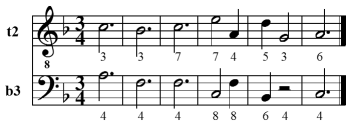
Fig 16g. A second tenor and a third bass.
That completes the basic structure of our eight-part example.
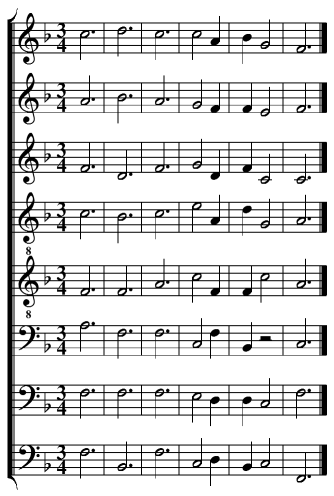
Fig 17. All eight parts together.
Now that the structure is there, any desired ornamentation may be added. Heed would need to be paid towards keeping all parts fairly simple, to prevent parallel 8ves and 5ths from creeping back in.
Careful examination of Table 4 for providing the eighth part reveals that for any one course, there are in fact four or five options. This makes it quite possible for a clever composer to use this method as an aid to writing music for up to as many as twelve parts.
The biggest problem in so doing is that when the bass moves by a 4th or 5th, a contrary 8ve and 5th cannot both be used. That would cause the additional two parts to make a parallel 5th. Instead, a rest would have to be substituted in one of the parts.
Thomas Ravenscroft gives us nine- and ten-part rounds, and selecting additional parts from Table 4 gives us the opportunity to write similarly impressive pieces. This round will be only a bar long (in order to make the example short) and the chords used will be D minor and A minor.

Fig 18. The chord structure for our round.
Our table of parts will have to show columns for the three chords Dm, Dm and Am. An additional column is also required for the transition back to Dm for the following bar.
| Part | Dm | Dm | Am | Dm | |
|---|---|---|---|---|---|
| Course: | - | 1 | 4dn | 4up | |
| bass | 1 | 8 | 8 | 8 | 8 |
| Fwd | 2 | 8 | 3 | 5 | 8 |
| 3 | 3 | 5 | 8 | 3 | |
| 4 | 5 | 8 | 3 | 5 | |
| Rev | 5 | 8 | 5 | 3 | 8 |
| 6 | 5 | 3 | 8 | 5 | |
| 7 | 3 | 8 | 5 | 3 | |
| 8th Pt | 8 | 8 | (8) | [8] | [8] |
| 9 | 3 | 3 | 3 | 3 | |
| 10 | 3 | (3) | [3] | [3] | |
| 11 | 5 | (5) | (8) | (5) | |
| 12 | 5 | (5) | [5] | [5] |
Table 15. Available options for our round.
The first thing to note is that row 12 makes parallel 5ths with row 8. The second is that row 11 stays on the one note, and as such is quite dull. We'll discard these two rows to save us trouble and instead only use rows 1 to 10.
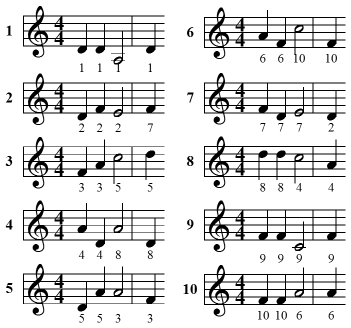
Fig 19. Ten parts for a round, showing which row of Table 15 each note came from.
The next step is to find a pleasing sequence for these parts, where the final note of one is the first note of another. Fig 20 shows one such solution, with a small amount of ornamentation added.
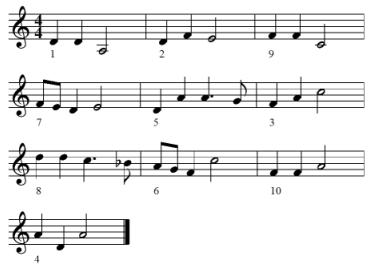
Fig 20. The melody for our 10-part round. The numbers refer to parts from Fig 19.
At this point, we've exhausted all the available options for apparently independent motion. So from where does Thomas Tallis conjure his 40-part "Spem in Alium"? That's 28 parts more than is legal. Even if there were a way to double the current method, we are still 16 parts short.
The first technique he has employed is to make liberal use of rests. As soon as one part cannot move without breaking the rules, it is given a rest, just as we used a rest in "Change Then For Lo!" to avoid making a tritone leap.
The cumulative use of rests is also an advantage; if ten parts are resting on one beat, and a different ten parts are resting on the next beat, we find ourselves having twenty parts moving independently. Of course, this technique makes for very short melodies, which may not be desirable.

Fig 21. A melody shared between two parts through use of rests.
The second technique is for as many parts as possible to be on stationary notes, thereby not causing parallel motion. The difficulty here is being able to move more than a few parts to the stationary notes. Tallis solves this by using slow-moving chords, to give himself more time to get parts where he wants them.
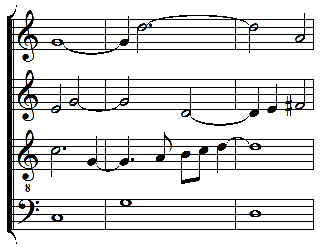
Fig 22. Three parts moving to stationary notes (G and then D) above a slow moving bass.
The third technique, and definitely the important one in terms of doubling the number of simultaneous parts, is that of syncopation. All of the existing movement options may be made again by another part a moment later, before the next chord transition. Syncopation must still obey all the other rules of counterpoint; it may be done by suspended dissonance (resolved through a downward step), use of a rest to avoid dissonance, or use of a stationary note that is common to both chords.
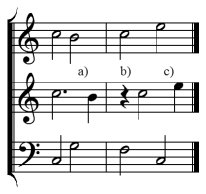
Fig 23. Independent motion between the upper two parts using syncopation: a) a suspended dissonance; b) a rest; and c) a stationary note.
Tallis shares the above three techniques evenly throughout all of the parts.
This method does not replace the skill of a composer - it is merely a tool to make the job easier. The tables given are there to point out the available options for providing enough independent melodies, so that the composer will not write themselves into a corner, and will spend less time searching out spare intervals when writing music of eight parts or more.
Now that we have demonstrated the ease with which one might compose massive pieces of music, the only problem remaining is that of assembling a choir of similar proportions. Fortunately, the occasions that warrant the use of a glorious and powerful motet are also those that attract large crowds of people. For these occasions, enough singers and a conductor might also be gathered.
Bathe, William (Rainbow, Bernarr Ed.), A Briefe Introduction to the Skill of Song, Kilkenny, Ireland, Boethius Press Limited, 1982 (c.1587).
Campion, Thomas, (Sympson, Christopher Ed.) The Art of Descant, or Composing Music in Parts, John Playford, 1670.
Jeppesen, Knud, Counterpoint; The Polyphonic Vocal Style of the Sixteenth Century, Trans. Glen Haydon, New York, Dover Publications Inc., 1992.
Lee, Jeff, Mathematical Musick - The
Contrapuntal Formula of Dr. Thomas Campion,
website:
http://www.shipbrook.com/jeff/counterpoint/
Accessed 2007-02-26.
Morley, Thomas, A Plaine and Easie Introduction to Practicall Musicke, London, Peter Short, 1597.
"Blessed Are Those That Be Undefiled", Thomas Tallis.
"Hard By A Crystal Fountain", Thomas Morley.
"Phillis, I Fain Would Die Now", Thomas Morley.
"Ave Maria", Francisco Guerrero.
"Ave Maria", Tomas Luis de Victoria.
"Hodie Christus Natus Est", Giovanni Pierluigi da Palestrina.
"Jubilate Deo", Giovanni Gabrieli.
"Laudate Dominum", Hans Leo Hassler.
"Let Us Have a Peale", Thomas Ravenscroft.
"O Clap Your Hands", Orlando Gibbons.
"Stabat Mater", Giovanni Pierluigi da Palestrina.
"Hey Hoe What Shall I Say", Thomas Ravenscroft.
"Sing We Now Merily", Thomas Ravenscroft.
"Amor Dove Mi Guidi", Giovanni Gabrieli.
"Omnes Gentes, Plaudite Manibus", Giovanni Gabrieli.
"Spem in Alium", Thomas Tallis.
Mathematical Musick: The Contrapuntal Formula of Dr. Thomas Campion, an article by Jeff Lee.
Two Parts in One: William Bathe's method for writing canon above a ground.
Die Bassmethode: A system for writing a 16thC bass part.
Copyright Jaysen Ollerenshaw 2007. Free use for non-profit.
Joan & Crispin's Homepage: https://wotnot.squanderlings.com/